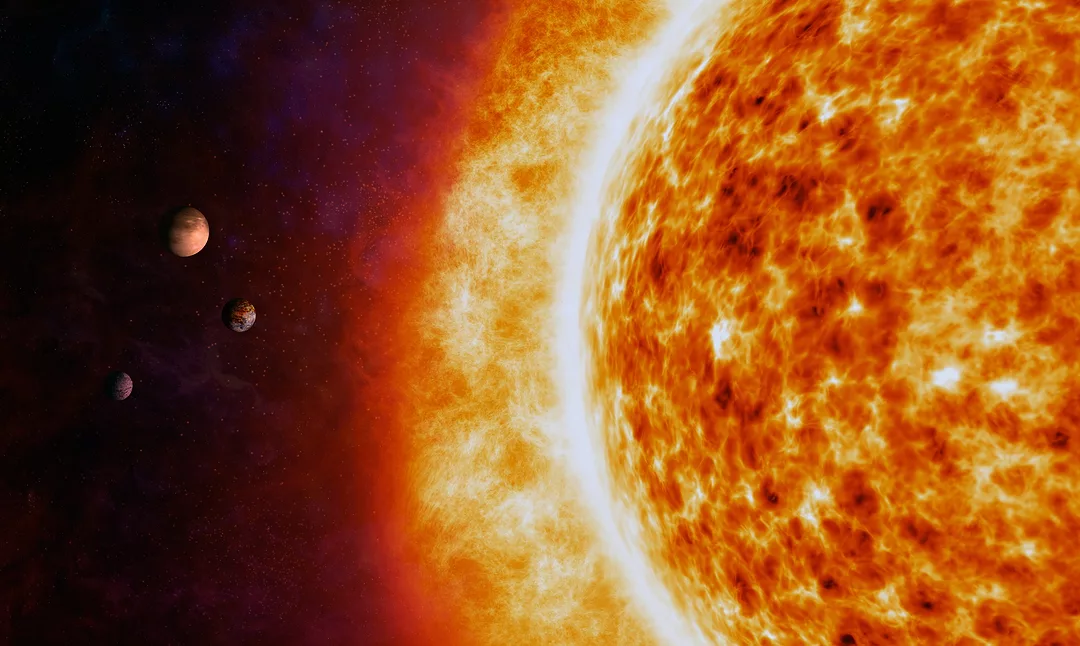On Dec. 5, 2022, a team of scientists at the Lawrence Livermore National Laboratory produced a tiny blast of something incredible. They created a fusion reaction that generated more energy than it required to catalyze. There is only one reasonable follow-up question: When can I get a fusion reactor to heat water in my home?
We see a fully functional fusion reactor every day. The Earth’s sun is an enormous fusion generator. Hydrogen atoms crash into each other millions of times per second. The result is a stunning amount of heat energy. If you could travel into the center of the sun, it would be about 7 million degrees (4 million degrees C). The sun is 91 million miles away, yet the fusion reaction is powerful enough to evaporate surface water on Earth to create clouds in our atmosphere (http://bit.ly/3H0vody).
As a side note, fusion is not to be confused with nuclear fission, which powers the nuclear power plants we have known for decades. Fission reactors are potent but also create radioactive waste. Fusion reactors primarily produce helium, which is inert and nontoxic. That is why fusion is seen as a holy grail in the clean energy production world.
Fusion reactors have appeared in many science fiction movies over the years, often portrayed as a big fiery ball of energy that is key to saving, or potentially destroying, the world. There are mentions of fusion in “Star Wars,” “Star Trek,” and Marvel movies. In “Spider-Man 2,” a beach ball-sized fusion reactor breaks containment and turns a scientist into the villain.
My favorite fusion movie reference is in the “Back to the Future” series. In this world, fusion reactors are simplified to a lunch box-sized contraption that runs on garbage, making it a powerful and practical appliance. How far away is this reality? In “Back to the Future,” they created this gadget in 2015, so we are behind schedule.
What’s All The Fuss?
If you stood by the fusion reactor at LLNL on Dec. 5, what would you have experienced? You would have heard a short pop, similar to a fuse popping in a control board, lasting less than 100 trillionths of a second of reaction time. The reaction produced 3 megajoules of energy, which translates to 2,843 BTUs in thermal energy terms.
The amount of energy released in this reaction could warm a 120-gallon domestic hot water storage tank about 3 degrees. When quantified that way, the fusion reaction does not seem like a big deal, especially because you would need to make room for 192 giant lasers to facilitate the reaction in your mechanical room (https://nyti.ms/3XLk3Un).
Here is why it is a big deal: The reaction produced 1.5 times more energy than it required to start. As scientists create sustained reactions that are harnessed well, the energy produced versus the energy required to start a reaction is important. Imagine buying a gallon of gasoline that powered your car 50 percent longer, with no CO2 emissions. That is what all the fuss is about.
This experiment is only the starting point; therefore, it is possible that fine-tuning will only require a few lasers or some other method of ignition. And 1.5 times is only the starting point in energy generation.
Residential Uses?
How much bigger is the LLNL reactor than a residential boiler? The target of the lasers in this reaction is about the size of a BB, so it is no big deal. On the other hand, the 192 high-energy lasers needed to point at the BB take up some room. Two 10-story buildings are on either side of the BB. The lasers travel slightly under a mile to strike the target. All that to say, you probably do not have enough space in your mechanical room, even if you move the holiday decorations (http://bit.ly/3X7a0ZR).
How much do we need to reduce the cost per reactor to make it residential-grade? Rounding up, we need to find about $3.5 billion worth of cost savings. The return on investment for this first net-positive reactor is unfathomably long. However, all first-generation machines cost a lot to build.
The lead time? This reactor took about 60 years to construct. However, the timeline to build the first machine and the one millionth are not the same. Arguably, it took 4.5 billion years to figure out how to build a car. If we look at Henry Ford’s Model T, the first production car was built in 1908.
Seven years later, the one-millionth car rolled off the assembly line. This milestone came so fast that Ford did not know which car was the millionth; 26 plants were running at the time. Sixteen years after the first Model T was sold, the ten millionth serial number of the series was produced. We build machines better, faster and more compact with experience (http://bit.ly/3QG40ow).
In the lifespan of a house cat, we went from zero Model Ts on the road to ten million. Could the timeline be similar for fusion reactors? Currently, we are not anywhere near a residential boiler-sized fusion reactor. Maybe it will never happen. We have had nuclear fission for decades, only as regional power plants. Regional power plants are much more likely in our lifetimes than compost-powered fusion reactor lunch boxes.
However, computers once occupied entire rooms; now I often lose my computer (iPhone) in one of my winter coat pockets because it is so small.
In the big picture, fusion is the game-changing technology the world needs. The tiny pop of the December 2022 reaction is the proof of concept needed to keep pushing forward with this technology. While the path to residential fusion boilers is a long road, the most important doubt has been cleared: It cannot be done.






